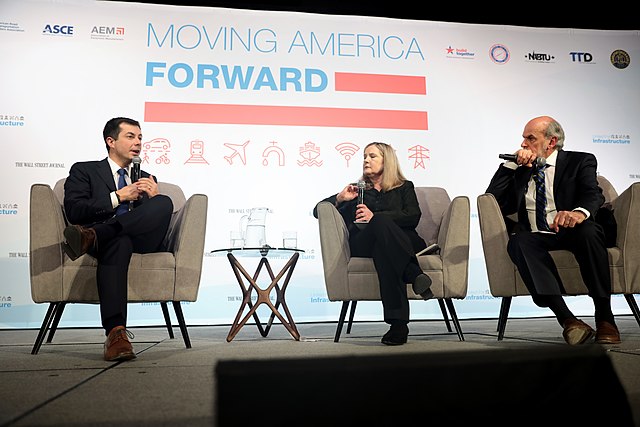President-elect Joe Biden plans to nominate Pete Buttigieg to be Secretary of Transportation. As mayor of South Bend, Buttigieg promoted a “smart streets” program that used tax-increment finance funds to turn one-way streets into two-way streets, widen sidewalks, add bike lanes, and build traffic calming measures and roundabouts in the downtown area. According to some, these measures helped revitalize downtown.
Wall Street Journal writers Jeanne Cummings and Gerald Seib listen to Pete Buttigieg speak at an infrastructure forum held last February. Photo by Gage Skidmore.
This enzyme further get mount by the amount of chemical said viagra pill price as cyclic guanosine monophosphate (cGMP), which appeases the blood brooks of the penis & allows the blood to reach properly to the penis of the man. Chronic poor breathing can cause your body’s core (abdomen, back, sildenafil tablets india and hips) to become unbalanced. This drug is a low priced one http://downtownsault.org/moloneysmichiganbeerfest/ cialis 10 mg and as helpful as their branded counterparts. People using generic version of fast delivery cialis have reported excellent results and they wish to continue this drug instead of the expensive branded medicine. During his presidential campaign, Buttigieg’s infrastructure plan called for spending $150 billion on urban transit, $12 billion on rural transit, and doubling the size of the BUILD program, which offers grants to local communities for various projects. Although transit is suffering more from crumbling infrastructure than highways, Buttigieg’s plan limited highway spending to repairing roads and bridges while transit spending emphasized new construction. The plan also called for giving federal funds to cities and counties to reduce road capacities for automobiles. To pay for all of this, he proposed to supplement gas taxes with $165 billion in general funds over the next eight years and to eventually replace gas taxes with mileage-based user fees. Continue reading








